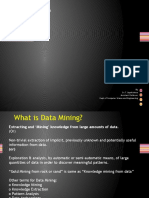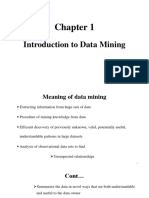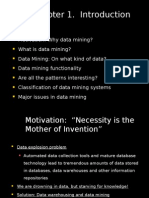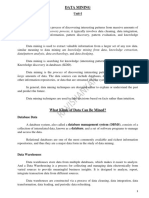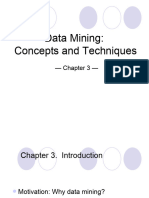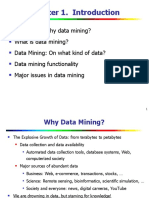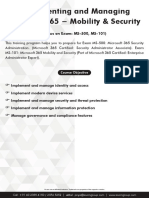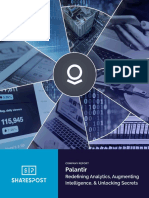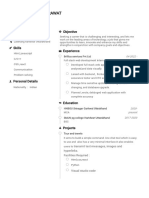0% found this document useful (0 votes)
57 views36 pagesMekelle University-Mekelle Institute of Technology Department of Information Technology Data Mining and Knowledge Discovery
The document provides an overview of data mining and knowledge discovery. It defines data mining as the non-trivial extraction of implicit, previously unknown, and potentially useful information from data. Data mining involves techniques from machine learning, statistics, databases, and other fields to discover patterns in large data sets. It discusses how vast amounts of data are now collected and stored, creating opportunities to apply data mining to gain useful knowledge and insights. The document outlines some common data mining tasks like classification, clustering, and association rule mining and the types of patterns they can reveal in databases, data warehouses, and transactional data.
Uploaded by
Yrga WeldegiwergsCopyright
© © All Rights Reserved
We take content rights seriously. If you suspect this is your content, claim it here.
Available Formats
Download as PPTX, PDF, TXT or read online on Scribd
0% found this document useful (0 votes)
57 views36 pagesMekelle University-Mekelle Institute of Technology Department of Information Technology Data Mining and Knowledge Discovery
The document provides an overview of data mining and knowledge discovery. It defines data mining as the non-trivial extraction of implicit, previously unknown, and potentially useful information from data. Data mining involves techniques from machine learning, statistics, databases, and other fields to discover patterns in large data sets. It discusses how vast amounts of data are now collected and stored, creating opportunities to apply data mining to gain useful knowledge and insights. The document outlines some common data mining tasks like classification, clustering, and association rule mining and the types of patterns they can reveal in databases, data warehouses, and transactional data.
Uploaded by
Yrga WeldegiwergsCopyright
© © All Rights Reserved
We take content rights seriously. If you suspect this is your content, claim it here.
Available Formats
Download as PPTX, PDF, TXT or read online on Scribd
/ 36






